I circle the Square
This post covers things I saw on 5 October, 2010.
On the first day after the music festival, I figured that with it being the national holiday and all, Tiananmen Square (天安门广场) might be interesting. It was certainly crowded. The first week of October is one of the biggest holidays in China, second only to Spring Festival.
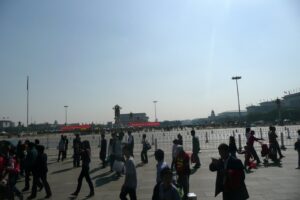
That’s what I saw after coming out of the Tiananmen West subway station. The empty gap just on the other side of the fence is Chang’an Avenue (长安街), and beyond that is the Square filled with people. It was a warm, sunny day, and there were vendors everywhere hawking ice cream bars and little Chinese flags.
Turning around from that spot, you see this:
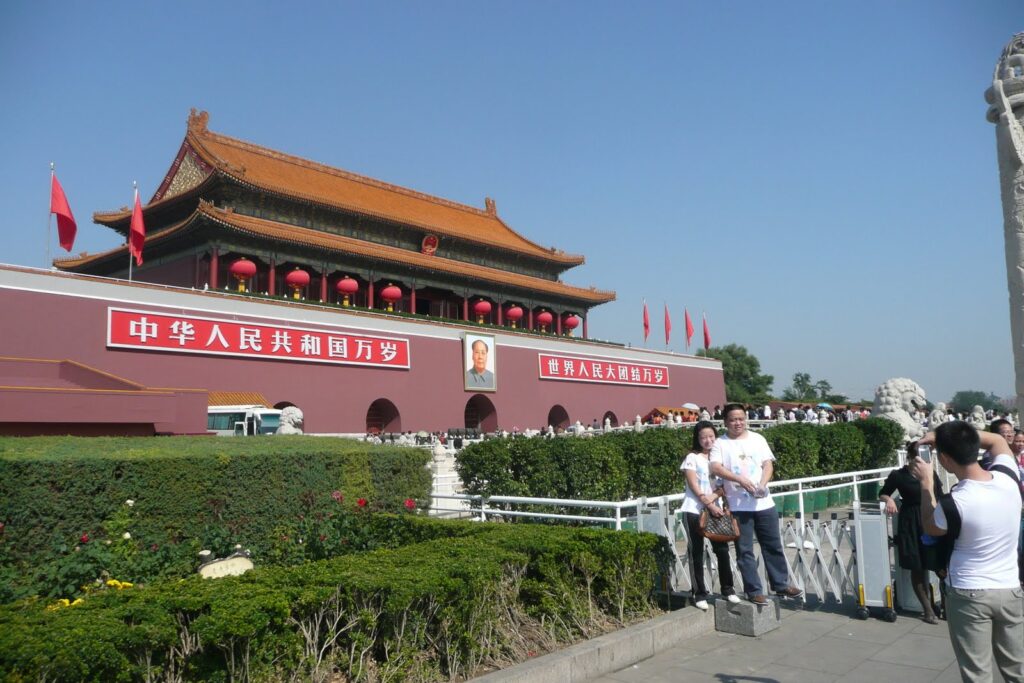
I wanted to get a closer picture of the big Mao painting, so I crossed the little bridge that takes you toward the Forbidden City (known to the Chinese as 故宫 – Gugong, or Palace Museum), and found that crowd control didn’t allow me to return. I was swept along with the masses.
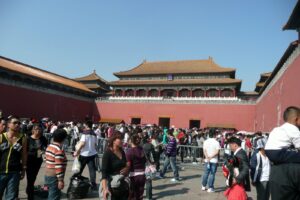
I’d already toured the Forbidden City several times, and it was really crowded, so I looked for a way out that didn’t involve buying a ticket. I found it with the entrance to Zhongshan (中山) Park, which for some reason I had never before visited.

I worked my way across the flow of traffic to the side of the courtyard and headed through the gateway, which didn’t seem to be attended by ticket takers.
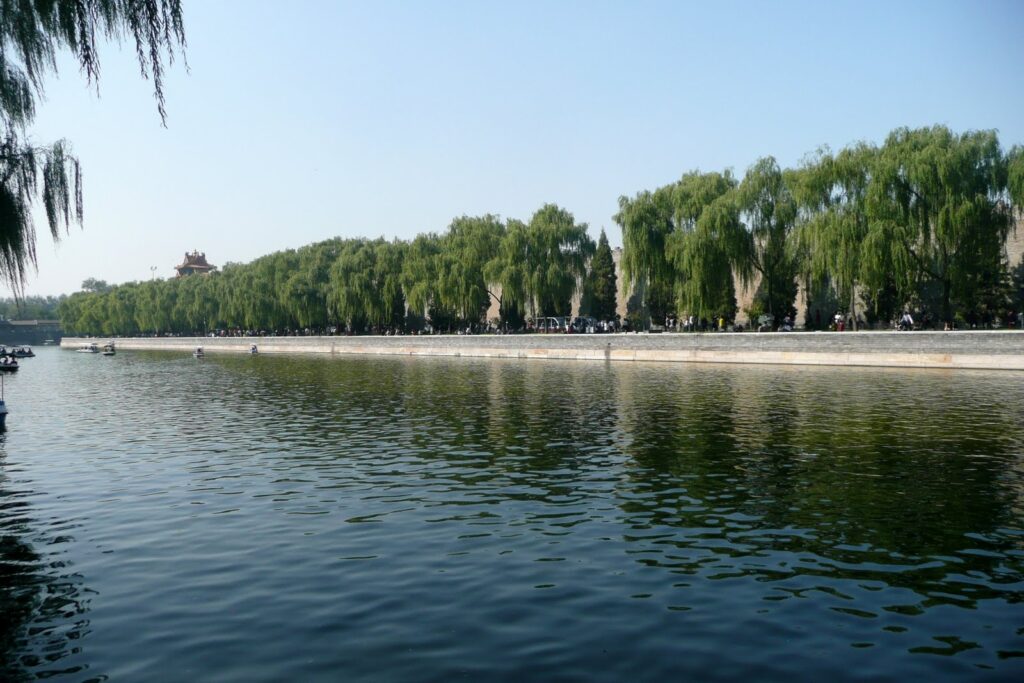
Just inside this entrance (it’s the East gate of the park) is the Southwest section of the Forbidden City’s moat.
And it seems I wasn’t the only one who ducked into the park to get a little break from the crowds outside.
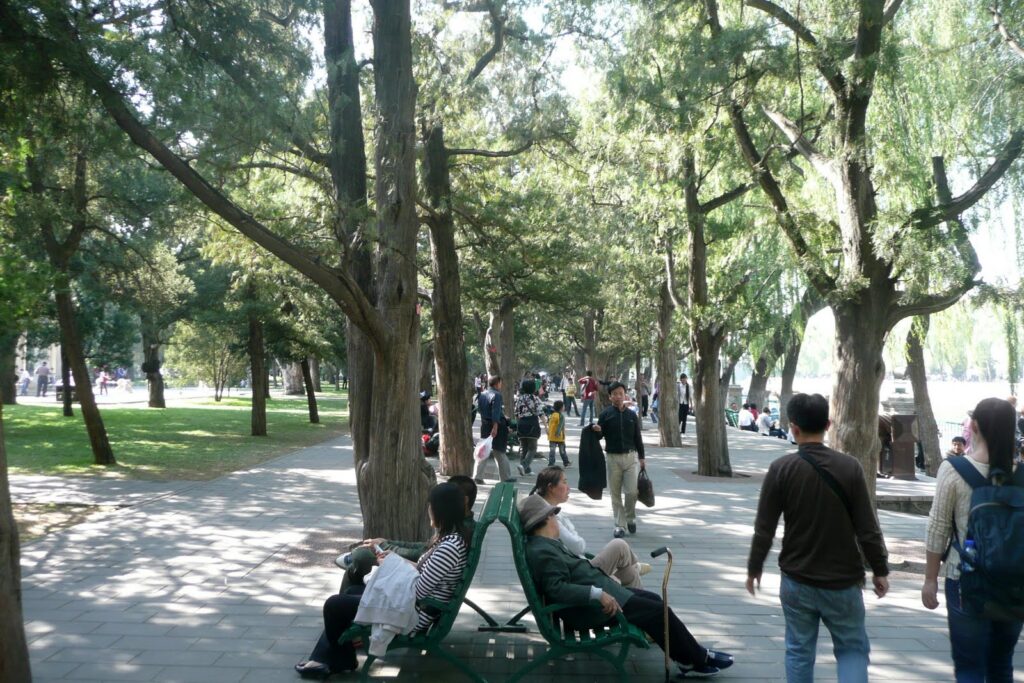
I wandered around the park, my only plan that I wanted to exit to the south, where I could get back to Tiananmen Square and the subway, but I took my time. The park is named after 孙逸仙 (Dr Sun Yat-sen), who is generally known to Mainlanders as Zhongshan, and is regarded as the father of modern China.
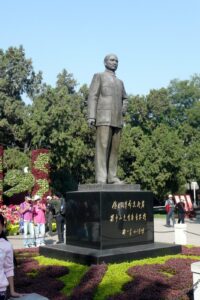
Given the history of the founding of the People’s Republic of China, their reverence of Zhongshan seemed a little odd to me, what with him being a Nationalist rather than Communist, but I learned that he’s been branded a “proto-socialist” Forerunner of the Revolution and escapes the negative image of his successor 蒋介石 (Chiang Kai-shek).
Chinese history, iconography, and political correctness (here in a more literal sense than usual) are complicated subjects, and I don’t pretend to understand all the intricacies, let alone what motivates them, but the statue exists.
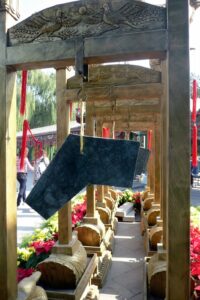
As I wandered around the park, I came across this interesting installation. It’s a set of 特鐘 (teqing) stone gongs. They can be struck with a mallet and produce a ringing tone.
I really would love to have some of these to use in my own music, but I don’t think they’d fit in my luggage. That would be sure to raise some questions passing through customs.

Another common sight in any of China’s historical places is parents or grandparents taking pictures of the kids dressed in royal costumes, or at least headwear. Certainly there’s nothing historically accurate about a little girl in a T-shirt and sweat pants hanging onto a metal light pole, but the cuteness factor is high enough that no one cares, I guess.
And no Chinese park is complete without some Strange Stones (供石).
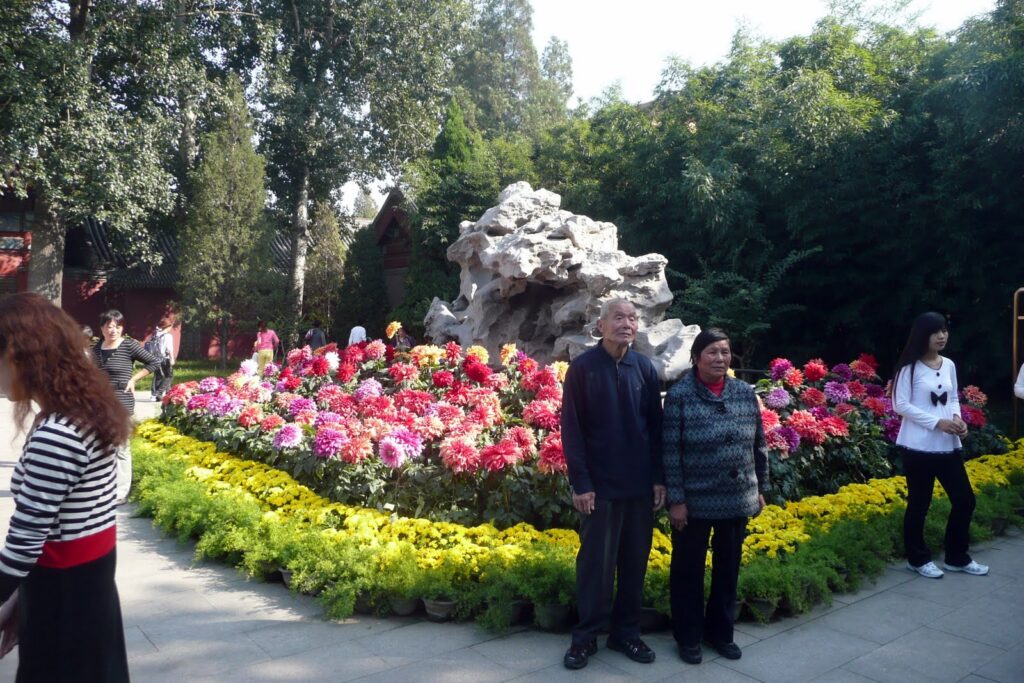
I thought this old couple was really adorable. They looked like country folk come to the big city to visit their families and see the festivities.
And of course there’s another thing needed to complete an old Imperial park:
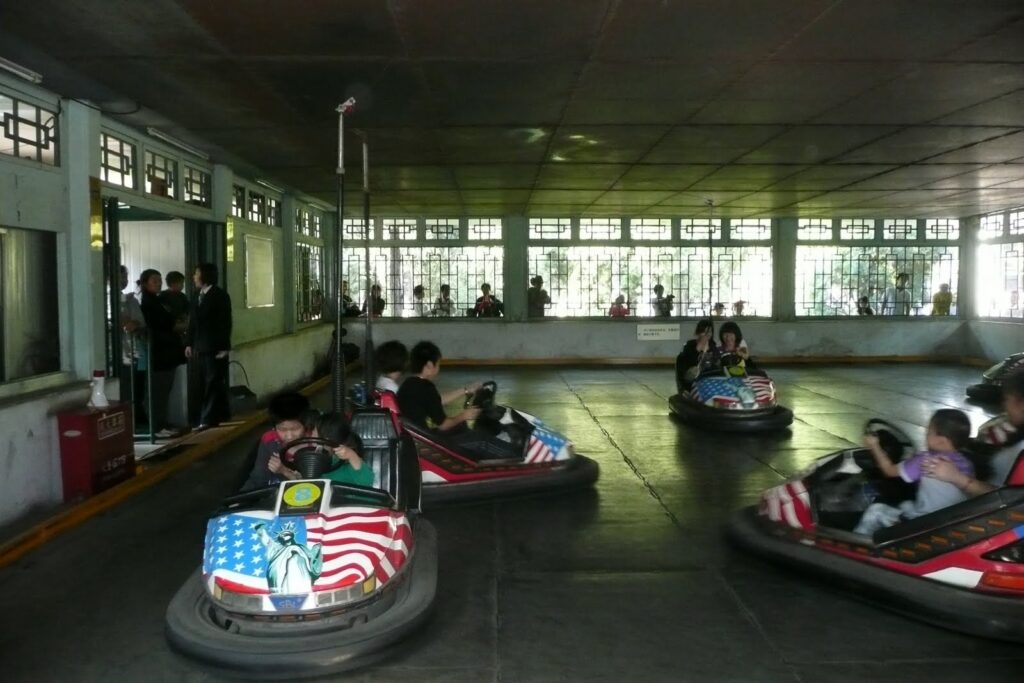
Gotta love the theme of the decoration on those things! Looks more like the Fourth of July than Chinese National Day. Or maybe there’s some symbolism involved in crashing into people driving vehicles plastered with American flags. Or maybe it’s a sly commentary on the American stereotype that Asian people are bad drivers… Or not.
I finally worked my way around to the South Gate and took the pedestrian tunnel to Tiananmen Square.
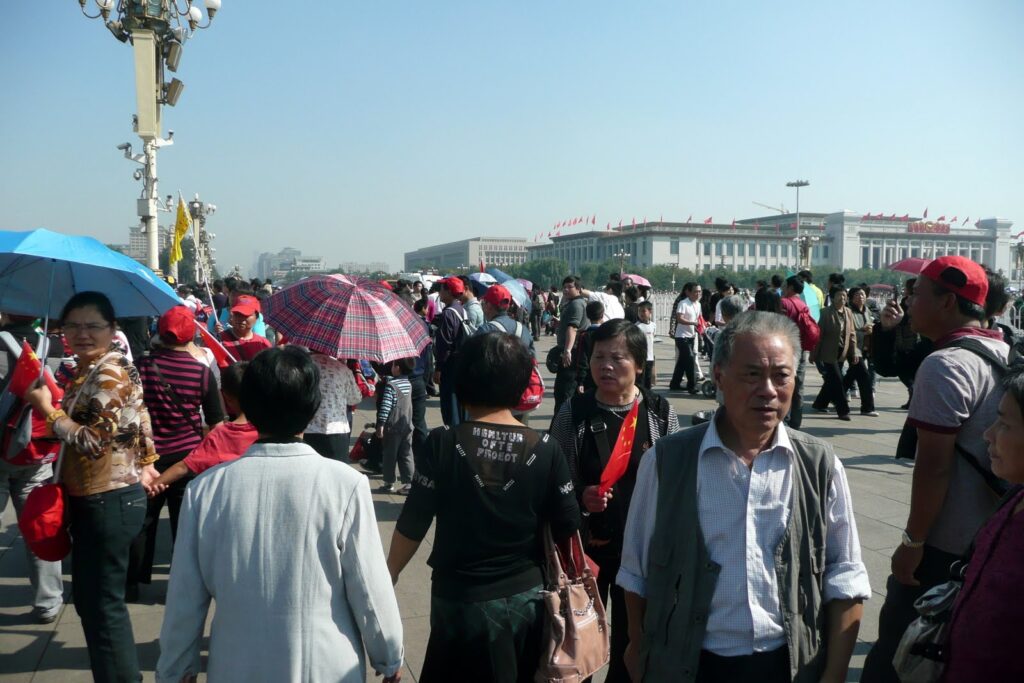
People mountain, people sea, as they say. (It’s a Chinese expression meaning a lot of people: 人山人海. My teacher told me there are several stories about how the expression came about.)
And take a moment to look at the writing on the shirt of the woman in the center. Not sure what that’s supposed to say…
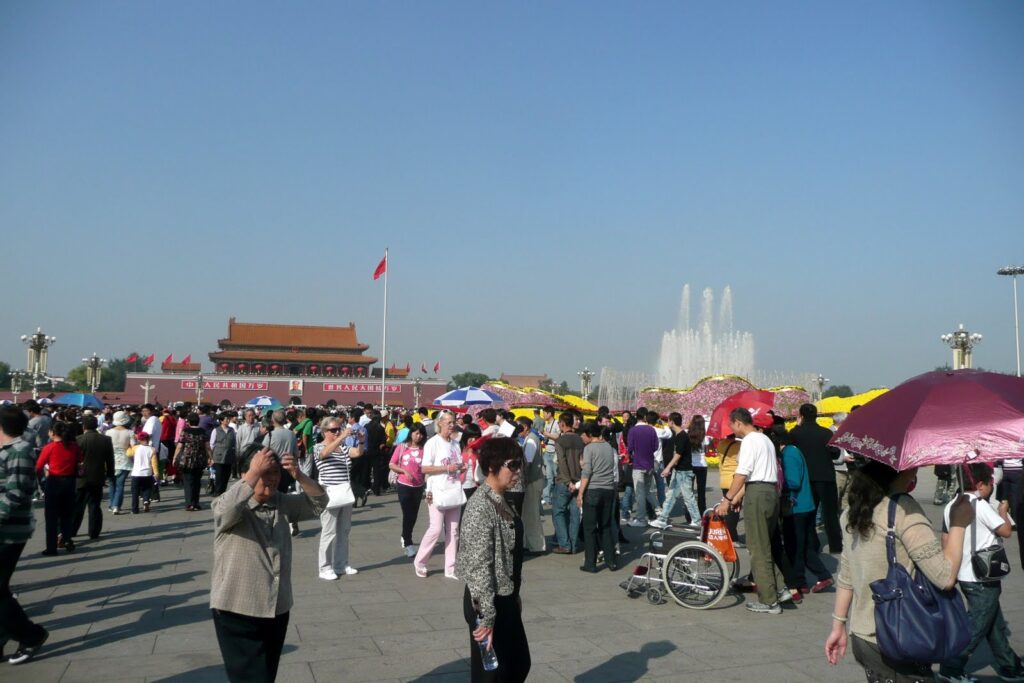
Normally the entire square is a vast expanse of flat paving, but a big fountain surrounded by flowers has been constructed, and there were quite a few other big floral displays here and there. They’ve also installed two massive video screens.
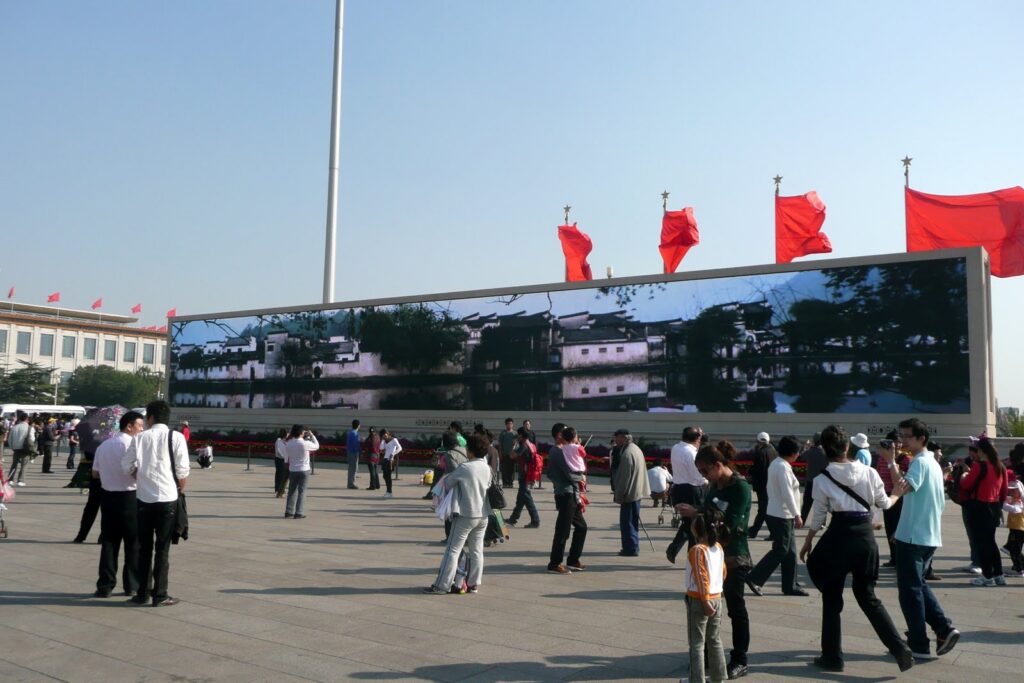
They show inspirational scenes of beautiful landscapes, historic places, and (of course) the Olympics.
In between the two video screens there’s a giant portrait…

…of Sun Yat-sen. In the background is 人民英雄纪念碑 (The Monument to the People’s Heroes), and behind that is Mao’s Mausoleum. I didn’t go around the other side of the mausoleum, but I’m sure there was a lengthy line to get in and see the Chairman’s remains. I don’t know how many times I’ve been to Tiananmen Square, but I’ve never felt the slightest inclination to enter the Mausoleum.
More from the 2010 trip to come…